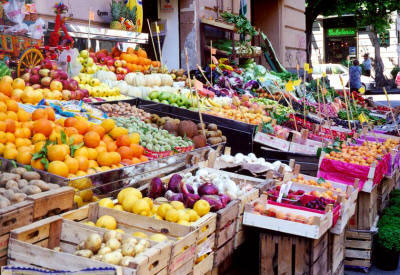Local markets and shoppingAll the towns in the Valle D'Itria have a weekly market and in general are open from early morning until lunchtime (1pm). Local markets are an essential part of puglian life and an insight into the locals lifestyle. Markets are the best place to buy fresh local fruit and vegetables at excellent prices, also local meat, bread and cheeses are all available. In fact the perfect way to begin your holiday is to visit a local market to stock up with food. Most towns are at their best on market days.
Where to find the markets
|
Local towns
|
|
|
Attractions
|
Adventure park
http://castellana.indianapark.it/ Egnazi Roman ruins http://www.egnaziaonline.it/ Zoosafari Fasano www.zoosafari.it Caves of Putignano http://www.grottadeltrullo.com/about/ |
Caves of Castellana
www.grottedicastellana.it/en Acquasplash www.acquaparkalberobello.it Egnazia water park www.acquaparkegnazia.it Dolphin watching www.joniandolphin.it |
Getting here
There are now many direct flights from the UK to Puglia.
Ryanair fly from London Stansted direct to Brindisi and Bari airports as well as from Manchester to Bari.
British Airways fly to from London Gatwick to Bari.
Easy jet fly from Gatwick to Bari or Naples.
ITA have several routes via Rome or Milan into both Brindisi or Bari.
The schedules change throughout the year with daily flights operating in the summer.
Connections from the rest of Europe are very good too with over a dozen airlines serving more than 25 airports across Europe. All the local airports are well served with international and local car rental companies. We can arrange transfers for you if you require. Trullo negli Alberi is approximately an hour by car from both Bari and Brindisi Airports.
Ryanair fly from London Stansted direct to Brindisi and Bari airports as well as from Manchester to Bari.
British Airways fly to from London Gatwick to Bari.
Easy jet fly from Gatwick to Bari or Naples.
ITA have several routes via Rome or Milan into both Brindisi or Bari.
The schedules change throughout the year with daily flights operating in the summer.
Connections from the rest of Europe are very good too with over a dozen airlines serving more than 25 airports across Europe. All the local airports are well served with international and local car rental companies. We can arrange transfers for you if you require. Trullo negli Alberi is approximately an hour by car from both Bari and Brindisi Airports.
